The five charts alarming scientists about the climate crisis
We hear ‘the era of global warming has arrived’, but what is the data behind such proclamations? Nick Ferris takes us through some of the most alarming readings scientists have ever seen – and they’re all from this summer
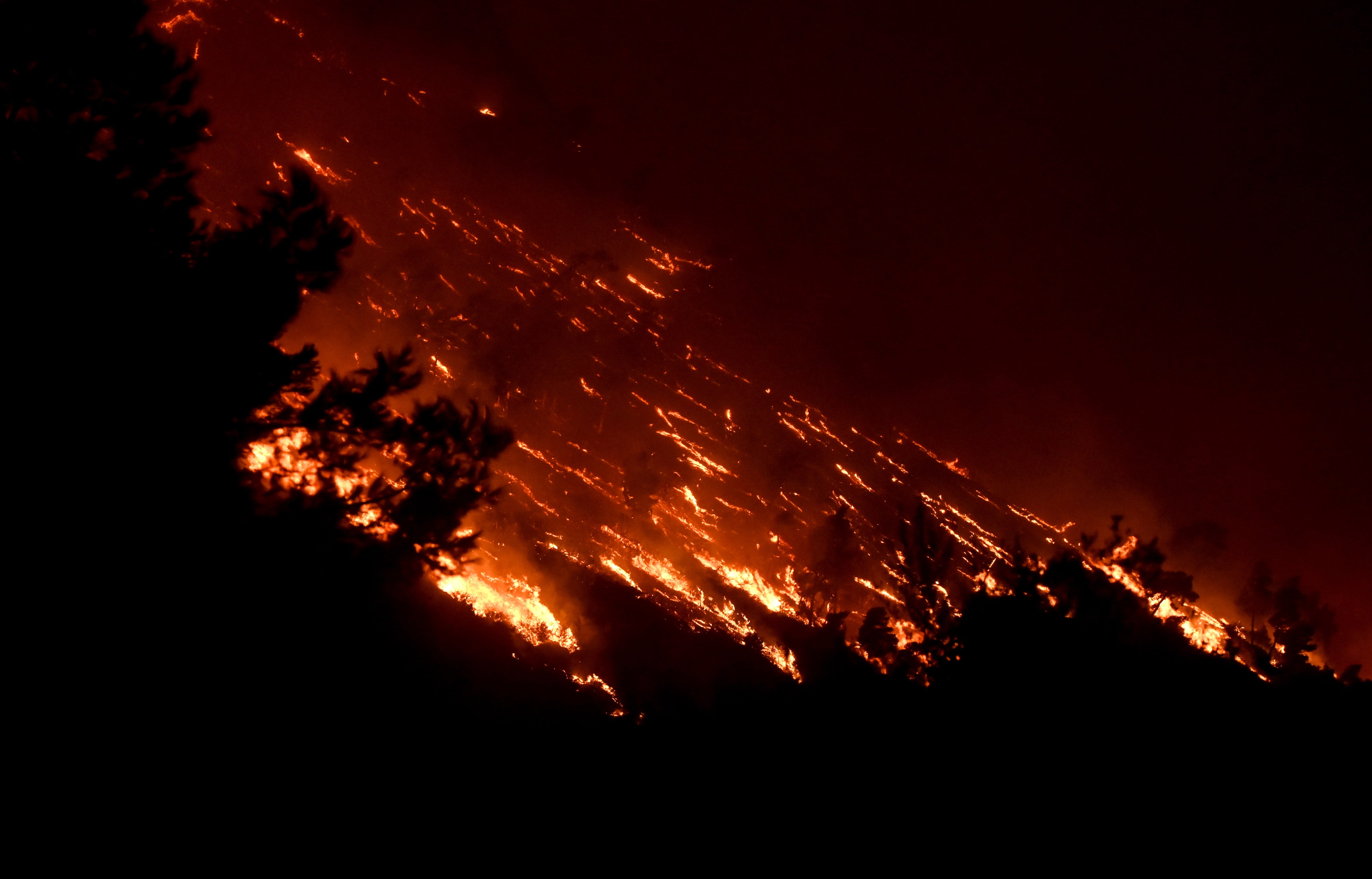
Scientific readings on the climate crisis have gone “totally bonkers” this summer. These were the words of climate scientist Brian McNoldy, from the University of Miami, back in June. Two months later and the summer of unprecedented climate change has only continued.
“The developments in the climate since spring 2023 are unexpected and dramatic”, Bjorn Hallvard Samset, a climate scientist at Oslo-based think tank CICERO (Center for International Climate Research), tells The Independent. “We did not expect so many types of records to be broken, by such wide margins, and for such long periods of time.
“To be clear, the root cause of it all is global warming”, adds Samset. “None of these developments are surprising in themselves, in a world that is getting warmer. But what is surprising is the fact that so many things are happening at once, and so quickly.”
UN secretary general Antonio Guterres has also not minced his words, describing the events of this summer as indicating that “The era of global boiling has arrived”.
“Climate change is here. It is terrifying. And it is just the beginning,” Guterres said in July.
But just what is the data behind these proclamations? Here are the most alarming data readings from just this summer.
Increasing world temperature
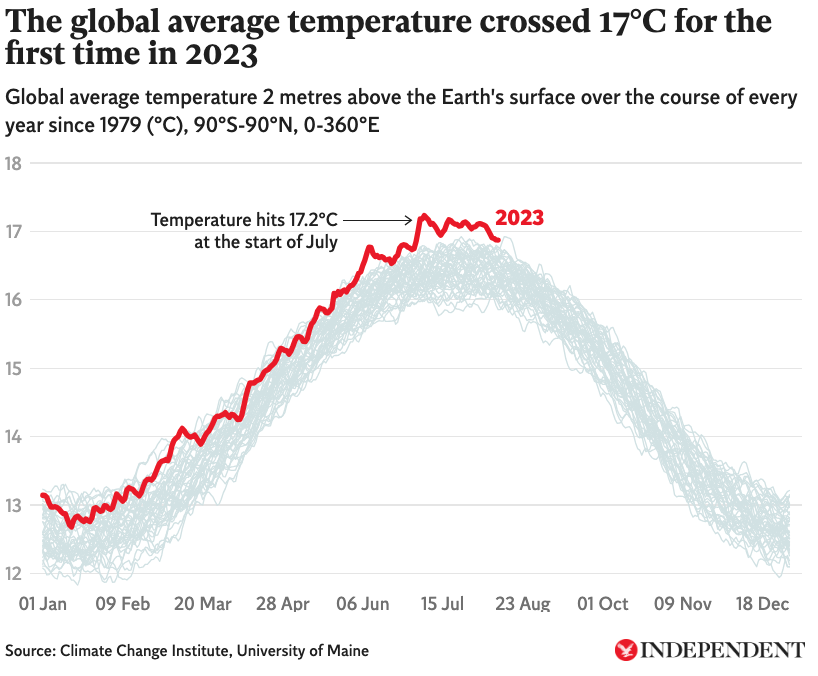
Firstly, there is what is arguably the most direct impact of climate change: the increasing global temperature.
The average global temperature crossed 17C for the first time ever in July, and throughout summer, it has remained a significant margin above what has typically been the reading over the past 40 years. Overall, July 2023 was assessed to be not only the hottest July on record, but the hottest month ever on record, according to the World Meteorological Organization.
The impact of El Nino – a climatic event occurring every few years that sees additional heat well up to the surface of the Pacific Ocean – will have contributed to the record temperatures. But even taking El Nino into account, temperatures have confounded expectations.
“The first week of July was the hottest week in the last 100,000-plus years; the readings were off the charts”, Tim Benton, environment lead at the UK think tank Chatham House, tells The Independent. “Normally in El Nino events, the hottest moment is between December and February, but we have seen record temperatures already, posing big questions as to what might happen next.”
Ocean temperatures
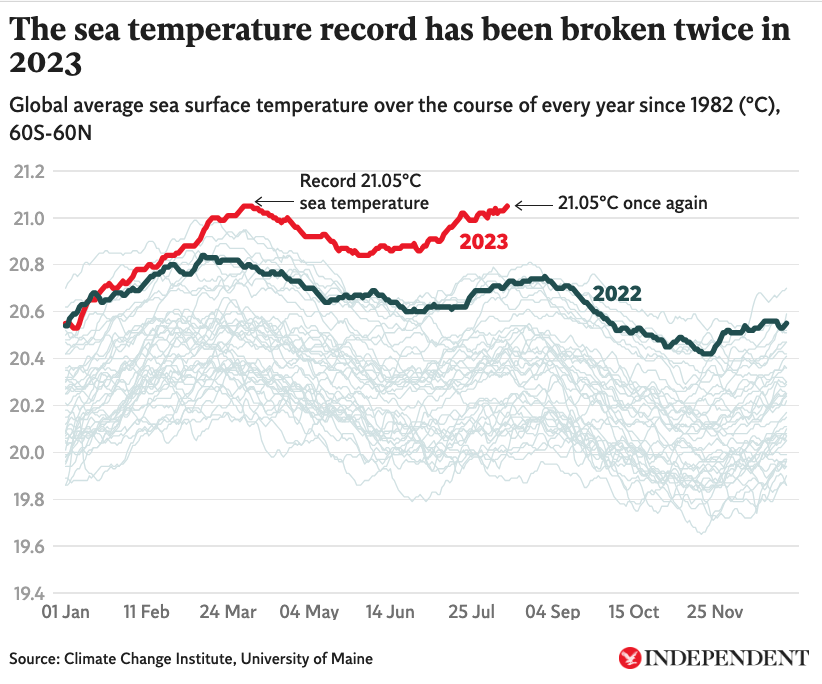
The temperature of the sea has also broken records, crossing the 21.05C mark not once but twice over the course of the summer.
Soaring sea temperatures is indicative of another reality of climate change, which is that 90 per cent of increased heat that results from emissions is currently being absorbed into the ocean. El Nino can once again offer a partial explanation for the unprecedented data, but they would not have occurred without human-induced climate change, say scientists.
“Oceans absorb most of the additional heat created from greenhouse gas emissions, so it is not at all surprising to see air temperatures and sea surface temperature records being broken in tandem”, says Dr Paulo Ceppi, lecturer in climate science at Imperial College, to The Independent.
The rising ocean temperature is accelerating the sea level rise, intensifying extreme rainstorms, and adding energy to tropical storms. It also threatens marine environments like coral reefs, as well as the communities who depend on them.
“The story is similar in the sea to on land: record breaking, by a record-breaking margin”, says Samset.
Melting Antarctic ice
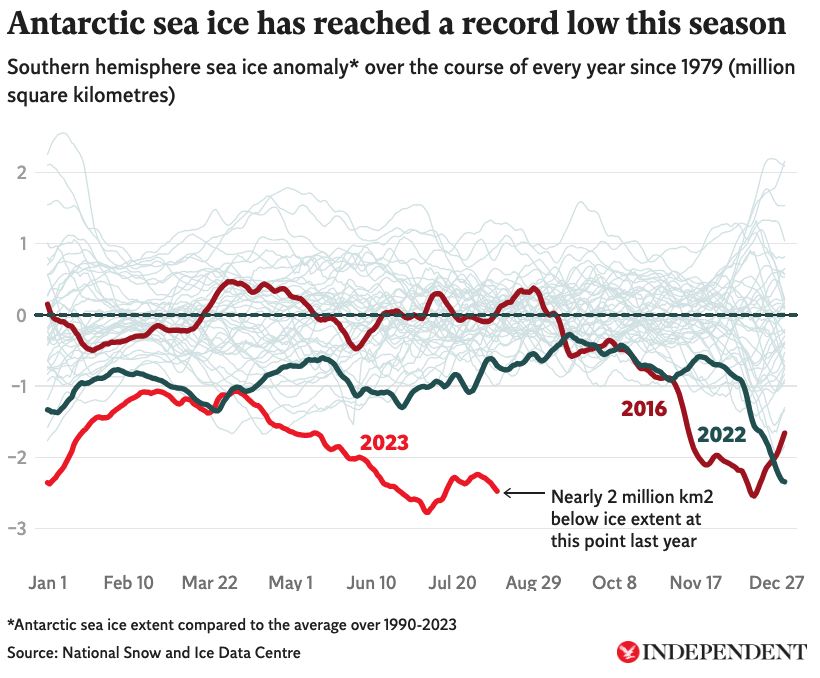
Warming seas have also led to global sea ice declining at an unprecedented rate.
Antarctic sea ice is at its lowest winter extent since satellite records began in the 1970s. Around 2.5 million km2 of ice is missing compared to the average extent between 1990 and 2023. If this missing area of ice was a country, it would be the 10th largest country in the world.
“Antarctic sea ice has been a downward trend for some years, which has been related to warm surface water,” says Samset. “However, the lack of freezing these last months is way outside this trend.”
Samset adds that a lack of sea ice is a critical problem for animals in the region, and it also means that more sunlight will be absorbed by the dark ocean surface, as opposed to being reflected by the white sea ice.
Wildfires
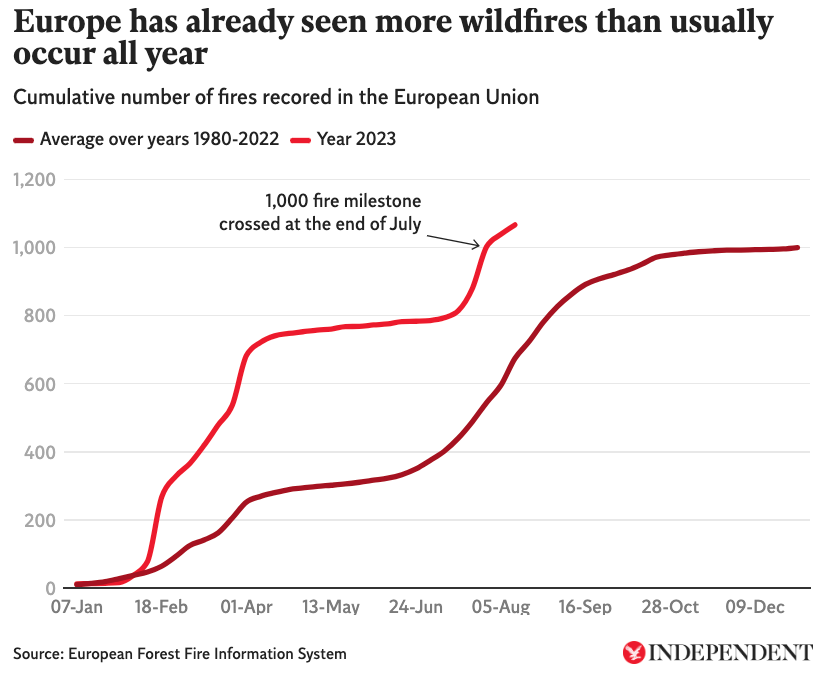
Soaring global temperatures this summer have contributed to devastating extreme weather, from severe flooding in China and India, to unprecedented heatwaves in North America and Southern Europe.
Extreme heat has also led to a deadlier-than-normal fire season in many regions: recent wildfires in Maui, Hawaii, are the deadliest in the US in more than one hundred years, while tens of thousands were evacuated from Rhodes and other Greek islands earlier in the summer.
Fire tracking data from Copernicus, the European Union’s Earth observation arm, shows that Europe has already seen more wildfires than occur on average over the course of a full year.
“There is a clear cause and effect relationship between climate change and more wildfires: prolonged periods of heat lead to dry, tinderbox-like conditions that fuels wildfire”, Imperial College’s Ceppi tells The Independent. “With global average temperatures continuing to increase, we will continue to see more intense wildfires burning larger areas.”
Carbon dioxide levels

In the background to all of the unprecedented climate data is one key metric: the ever-increasing volume of carbon dioxide that is present in the atmosphere, which is the result of humans burning ever more volumes of fossil fuels.
Data from the Mauna Loa Observatory in Hawaii, which has the longest record of direct measurements of CO2 in the atmosphere, is unequivocal. May 2023 saw the highest level of CO2 ever recorded, at 424 parts per million, capping off an unbroken trend of more carbon detected in the atmosphere every year since the 1960s.
Carbon dioxide measurement data such as this means that while the pace of climate change can take scientists by surprise, the direction of travel that the climate is taking is anything but surprising.
“Although the current climate impacts are exceptional, they are exactly what we’ve expected: increased emissions have led to increased global warming, and the result is that heat records are being broken, sea temperatures are increasing, and Antarctic sea ice is at a record low,” says Imperial College’s Ceppi.
“Achieving net zero is so critical in our fight against climate change. Warming will stop when we reduce the world’s greenhouse gas emissions to net zero. So, the longer it takes to do that, the hotter and harsher our planet will become.”






Join our commenting forum
Join thought-provoking conversations, follow other Independent readers and see their replies
0Comments